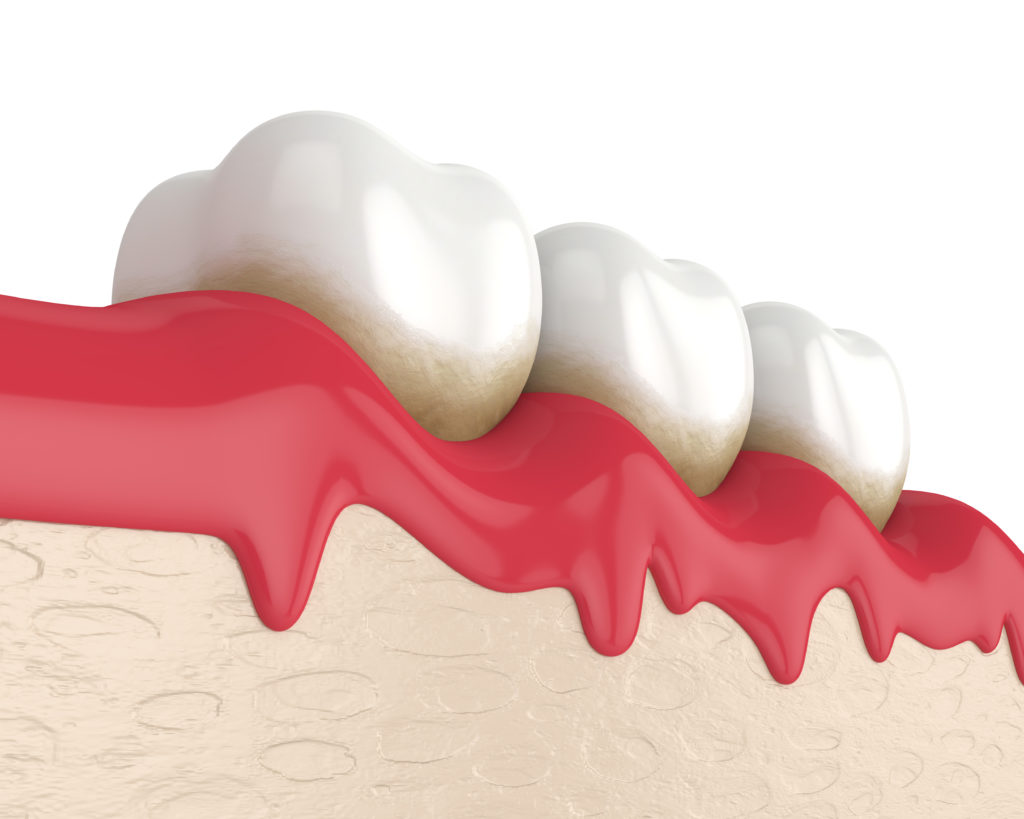
When your dentist finds that you have gum disease, they might refer to it as either “gingivitis” or “periodontitis.” However, these two terms are not interchangeable; they refer to separate stages of gum disease and can determine what kind of treatment you need to protect your smile. It’s important to know the difference between gingivitis and periodontitis so that when your dentist uses either term, you know exactly how serious the situation is.
Gingivitis: The Early Stage of Gum Disease
When bacteria build up in the areas between your teeth, they can cause the gums to become red and inflamed. You may also notice that they bleed easily when you brush or floss. This initial inflammation is called gingivitis. At this point, the gums are irritated, but the teeth are still largely unaffected. Since no permanent damage as been done at this point, it is actually often possible to reverse gingivitis by improving your oral hygiene. That means brushing twice a day for two minutes at a time, flossing daily, using mouthwash, and attending regular dental checkups and cleanings. If gingivitis is left alone for too long, it can turn into periodontitis, so action should be taken as soon as you notice the warning signs of inflammation.
Periodontitis: Advanced Inflammation
Once gingivitis becomes periodontitis, the gums will start to pull away from your teeth, causing periodontal pockets to form. Bacteria and debris can become trapped in these pockets very easily, causing infections. Your immune system will try to fight the bacteria, but the enzymes it produces in the process will slowly break down the tissues that anchor your teeth in place. This causes the pockets to grow even deeper, and eventually the teeth will become loose. It’s not uncommon for teeth to fall out altogether when periodontitis goes unaddressed for too long. At this point, your dentist will need to perform periodontal treatments such as scaling and root planing to stop the infection from spreading and give the gums a chance to heal.
How Will You Know If You Have Gingivitis or Periodontitis?
While bleeding, swollen, or tender gums can indicate the presence of gingivitis, sometimes there are no warning signs until you’ve already reached the periodontitis stage. Thus, your regular six-month dental appointments are your best chance to have gum disease identified. If you notice your teeth have come loose or have shifted enough to change the way you bite, call your dentist immediately; chances are you currently have an advanced form of gum disease.
Gingivitis and periodontitis may be different, but fortunately it is still possible to treat both. Even so, it’s always best to avoid gum disease altogether when you can, so don’t neglect your daily oral care routine, and be sure to call your regular dental practice immediately if you think something is wrong with your smile.
About the Author
Dr. George A. Hoop earned his DDS at the Emory University School of Dentistry, where he graduated second in his class. He also completed a periodontal specialty residency to expand his clinical skillset. As a result, he is very skilled in diagnosing and treating gum disease, whether it’s in the early gingivitis stage or the more advanced periodontitis stage. If you have concerns about gum health, schedule a consultation with him at Total Dental Solutions for Adults in Fort Myers by visiting his website or calling (239) 939-7299.

